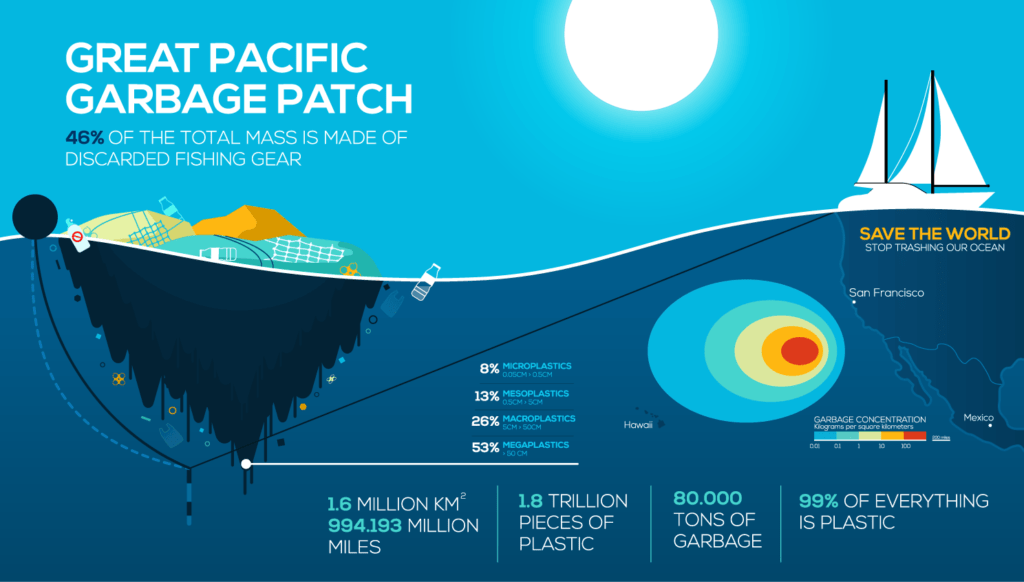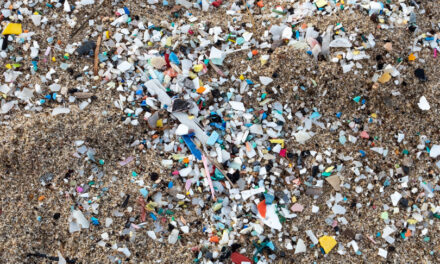The Great Pacific Garbage Patch is a massive accumulation of marine debris in the North Pacific Ocean. It is estimated to be twice the size of Texas and contains over 1.8 trillion pieces of plastic. The patch is not a solid island, but rather a collection of plastic debris that has been trapped in a gyre, or rotating current.
The Great Pacific Garbage Patch is thought to have originated from land-based sources, such as rivers and beaches. Plastic waste that is washed into the ocean can be carried by currents for thousands of miles before it is trapped in a gyre. Once in a gyre, the plastic debris can remain for hundreds of years, breaking down into smaller and smaller pieces.
The Great Pacific Garbage Patch is a major threat to marine life. Animals can become entangled in plastic debris, or they can mistake it for food. Plastic can also block the digestive tracts of animals, leading to starvation. In addition, the chemicals that leach out of plastic can pollute the ocean and harm marine life.
There are a number of efforts underway to clean up the Great Pacific Garbage Patch. One group, The Ocean Cleanup, has developed a system of floating barriers that can collect plastic debris from the ocean. Another group, Plastic Soup Foundation, is working to raise awareness about the problem of plastic pollution and to encourage people to reduce their use of single-use plastics.
The Great Pacific Garbage Patch is a major environmental problem, but it is one that can be solved. With concerted effort, we can clean up the patch and protect marine life from the harmful effects of plastic pollution.
Here are some additional facts about the Great Pacific Garbage Patch:
- The patch is made up of a variety of plastic materials, including bottles, bags, fishing nets, and food containers
- The plastic debris in the patch is broken down into small pieces, some of which are less than a millimeter in size
- These small pieces of plastic are known as microplastics, and they can be ingested by marine animals
- Microplastics can also enter the food chain and be consumed by humans
- The Great Pacific Garbage Patch is a growing problem, and it is estimated to double in size every 10 years.
What can you do to help?
Reduce your use of single-use plastics.
Recycle plastic whenever possible.
Dispose of plastic properly.
Support organizations that are working to clean up the Great Pacific Garbage Patch.
By taking these simple steps, you can help to reduce the amount of plastic pollution in the ocean and protect marine life.
People Working on This…
Global Trash Solutions – globaltrashsolutions.com/blog/great-pacific-garbage-patch/
The Ocean Cleanup – theoceancleanup.com/great-pacific-garbage-patch/




